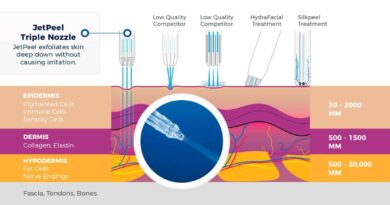How Has Technology Improved Hair Transplantation?
What is a hair transplant?
Before knowing how technology has improved hair transplantation, it is important to define what hair transplantation is. A hair transplant can be defined as a surgical procedure that is carried out with the aim of improving the problem of baldness, also known as alopecia, at some point in their lives. Likewise, alopecia is related to loss of self-esteem, insecurity, and social or professional isolation. On the other hand, hair transplantation is a procedure that helps women and men to rescue their image with the one they feel comfortable with and thus recover their self-esteem. The procedure must be performed in a medical office with certified specialists in the area.
Also Read Stress management: to make learning better
Technology in hair transplantation
At present, technology is constantly advancing and the aesthetic health sector is not exempt, most people want to look good and feel comfortable with themselves, which is why they decide to undergo this type of procedure. Hair transplantation has greatly improved its implementation techniques in the last decade, perfecting its methods turning them into safer and more effective procedures, also seeking to reduce extraction times and improve follicle rooting to minimize impact and maximize results. Thanks to technology, hair transplantation has been evolving and perfecting its techniques with the aim of making them less invasive and obtaining natural results.
Implementation Techniques for Hair Transplantation
1) Follicular Unit Extraction (FUE):
It is currently the most used technique and is considered an excellent technique for hair transplantation, due to the high precision of its results and the great development it has undergone in recent years, this consists of the methodical extraction one by one of each follicular unit of the donor part to subsequently implant them in the regions affected by alopecia. This technique is not very aggressive and does not require a long recovery time, likewise, it does not leave visible scars and has a result similar to that of natural hair.
2) Direct Hair Implantation (DHI):
Currently, it is a widely used method for the direct implantation of follicular units, it consists of the use of implanters for the implantation of hair follicles in the region affected by alopecia, these implanters are a surgical instrument in the shape of a pen, the which is their lower part they have around scalpel also known as a punch with a lateral slot and in their upper part they have a button through which the follicular units that have previously been introduced into it are implanted, leaving the root downwards and the hair upwards, on the other hand, this method makes it possible to reduce the time in which the follicles remain outside the body and therefore increases their survival as well as restores the volume of hair loss as a result of alopecia and excellent results are obtained.
3) Two-phase regenerative therapy:
This treatment known as regenerative therapy is one of the most avant-garde methods, it consists of combining two effective methods to obtain better results for the patient, this method is ideal for those who want to maintain their scalp. The methods that are executed in this therapy are the following:
· Low power laser: it is used to stimulate blood flow in each treatment in order to stimulate new hair growth and stop hair loss, it also seeks to eliminate dandruff and irritation.
Platelet-rich plasma (PRP): It consists of applying microinjections into the scalp with the same blood of the patient that contains progenitor cells. These cells are broken down to separate, isolate, and filter them. Then, from a stimulus, the cells produce the maintenance and proliferation of new cells, which leads to the growth of new hair.
4) Dual Extraction Device:
This device is a double extraction motor that allows a right-handed and a left-handed component of the clinical team to work at the same time. Furthermore, this device facilitates the speed of specialized personnel since it reduces the procedure to half the time. On the other hand, it uses a small punch or scalpel to collect each fragment of skin without causing any damage. It also does not depend on clinical staff to check in real-time the progress and quality of the operation. A great advantage of this instrument is that by reducing the time of the operation, it improves the quality of the procedure.



